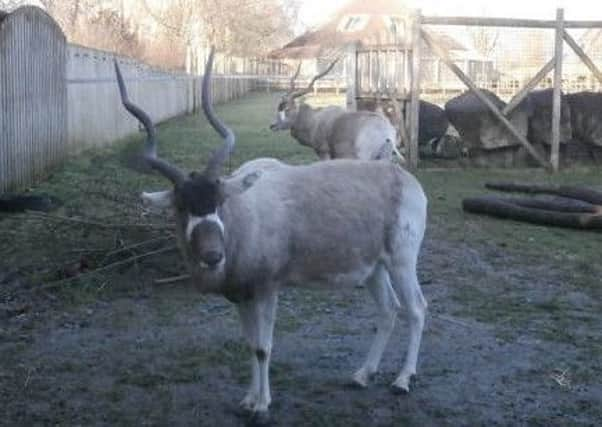View from the Zoo: Social animal on critical endangered list


Addaxes are a type of antelope that live in the desert and have adapted certain traits to live in such a harsh environment including splayed hooves for walking on sand and are able to conserve water by producing highly concentrated urine.
The antelopes are social animals, congregating in herds of five to 20 individuals which provide protection. The colouring of their coat varies with the seasons. In the winter, it is greyish-brown with white hindquarters and legs, and long, brown hair on the head, neck, and shoulders. In the summer, the coat turns almost completely white or sandy blonde. Their head is marked with brown or black patches that form an ‘X’ over their noses. The most notable feature is their curved and spiralling horns which the males mainly use for competing with one another.
Advertisement
Hide AdAdvertisement
Hide AdThe addax mainly eats grasses and leaves of any available shrubs, leguminous herbs and bushes and generally stay in one place and only wander widely in search of food. They are able to track rainfall and will head for these areas where vegetation is more plentiful. However due to their slow movements, the antelope is an easy target for its predators such as lions, African hunting dogs, cheetahs and leopards. Unfortunately they face far greater problems than natural predators in the wild of northern Africa.
Since the mid-1800s the addax population has decreased massively due to overhunting, habitat loss and fragmentation. They have also suffered “massive disturbance” from oil installations.
The addax is just about as close to extinction in the wild as it possibly could be, and is classified as critically endangered by the International Union for Conservation of Nature (IUCN). In a 2016 report, the IUCN said a survey had found only three in the wild. However there is hope for this species and it highlights the importance of zoos across the globe.
Thankfully there are around 2,000 in captivity in Europe and North America with plans to reintroduce herds back into the wild in the nearby future.